This sounds and looks romantic but it was often dangerous for drivers and passengers as well as uncomfortable. We all know about the threat from highway men in the C17 and C18. The punishment for highway robbery was hanging and many were hanged on the gallows at Tyburn, but there were many other potential dangers as these 1900 recorded incidents affirm.
‘In February a collision occurred in Blue Anchor when a man driving a coach towards a sharp turn in the road was approached by a wagon and horses coming in the opposite direction. The two came into collision, breaking the harness of the fore horse on the wagon causing both animals to bolt. The drivers were thrown free and only suffered scratches.’
‘A labourer suffered severe injuries when rounding a corner in Williton with a horse and wagon.The horse suddenly bolted and the man was thrown to the ground hitting his head. One of the wagon wheels ran over his chest and he was unconscious for some time.’
‘A Dunster man was fined 40s and ordered to pay costs of 10s after being found drunk in charge of a horse and cart. The man claimed he had drunk some whisky to alleviate toothache but the court was told that he had been found guilty of a similar charge before and was well known as a heavy drinker.’
Falling off the top of an over loaded stagecoach was not uncommon. Stage coaching as we know it appeared on England’s roads in the early C16. At a stage stop, usually a coaching inn,horses would be changed and travellers could get a drink, food or stay overnight. The first coaches were little better than covered wagons with no suspension, drawn by four horses and could only travel 5mls per hour on rutted or unmade-up roads. In cold or wet weather travel was often impossible. The Golden Age of stagecoach was in the 1700’s when established routes began and they could travel at 12mls per hour. This is when Coaching Inns sprang up, some still trading today as pubs/inns. They are recognisable by their narrow archways leading into stable yard behind.
Minehead had several coaching inns. The Feathers and The Duke of Wellington being the best known. In 1850 passengers were waiting outside The Feathers to alight the coach on which their luggage had been loaded, when the driver turned away for a moment. What the ostler was doing no-one knows but he was certainly not holding the horses’ heads because suddenly they started off. The coachman, ostler, guard and half of Minehead chased after them in vain.
One of the horses went past Alcombe round the sharp bend into Dunster and wheeled round halting at exactly the right place in front of The Luttrell Arms. There, the coachman found them, and brought them back to Minehead!
Two visiting families, the Esdailes and the Brakes, described their interesting experience. They set off from The Feathers in a coach accompanied by the master of The Feathers towards Porlock when they came upon a hill “as steep as a carriage could ever encounter”. They got out and left the coach and horses to make their way with lightened load whilst they “truged it merrily“ to the top of Porlock Hill though they found the road full of rolling stones and treacherous underfoot. Back in the carriage despite constant heavy showers they admired the views but the way was so rugged that they often had to get out and walk so the coach could pass the rain soaked hollows in safety. At Countisbury the coach was sent ahead after the leading horses had been taken off and both the back wheels tied with ropes. The walkers were soon up to their ankles in mud as the rain was falling so violently.
In 1908 there was great concern amongst Minehead’s residents about the increasing volume of traffic on the roads and nearly 100 people signed a petition to prohibit a motor coach owned by Western Motor Coaches Ltd.
In their letter to the council they wrote,
“The neighbourhood is well-supplied with horses and carriages for its requirements which enables a large number of residents to earn a livelihood and therefore such a coach is utterly unnecessary and totally unsuitable for this district.”
It is little wonder that Harold Langdon, as the proprietor of the largest posting establishment in Minehead was a signatory. His main premises were in Summerland Avenue and his best known vehicles were the four horse coaches, Red Deer and Lorna Doone which made regular daily runs between Lynton and Minehead.
These proved something of a tourist attraction, especially when an extra pair of horses was put on to navigate Porlock and Countisbury hills. The coachman would begin sounding his horn as the coach neared Minehead by Woodside Close in Woodcombe and gather his horses into a trot so that the coach entered the town with a jingling flourish.
Bookings were taken at the GWR station and at Kinnersley Fancy Stores (now HSBC) in Wellington Square. The coaches left each day from the railway station as did Hobbs and Co’s horse drawn charabanc.
It appears that Hobbs was part of the Langdon enterprise as he also hired out breaks, landaus and victorias. The charabancs ran daily to Porlock Weir leaving at 11.55am and returning at 6.30pm. Cost 2s 6d. An advert of the day states that both open and closed carriages could be sent to meet any train on receipt of a wire. All his vehicles were kept at the Langdon premises. He too signed the petition.
Others whose businesses were threatened by the ominous onslaught of the motor vehicle were the saddler, William Preddy, of 1, The Parade, on the corner with Holloway Street and J.W.Ridler. He had taken over The Metropole hunting stables from Messrs Merson and Harding. This was a business which relied on the hire of hunters, hacks and of course polo ponies.
Interestingly, Mr Williams, a coach builder at the time of the petition, did not sign. It seems he was turning his attention towards the motor car and in a 1911 guide book advertises himself as a carriage and motor body builder along with a picture of a motor car and various carriages.
It is unknown if the petition was successful but there were few motor coaches running in the area before 1920. It was the following decade that saw the rise of the motor coach and the demise of Red Deer and Lorna Doone.
Compiled by Sally Bainbridge on behalf of Minehead Conservation Society.
Buy the book! Minehead & Beyond
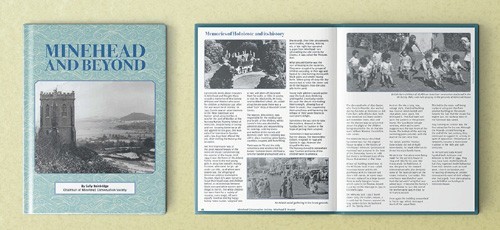
This book is a compilation of articles written for this magazine by Sally Bainbridge on behalf of Minehead Conservation Society. It contains information about the richness of West Somerset’s history; culture; people; heritage; traditions and beautiful and varied landscape. The book costs just £5 and all profits go to Minehead Conservation Society.
Available to buy from AR Computing, Park Lane Home Furnishing (in their Park Lane shop), Minehead Tourist Information Centre and Townsend House (Monday am).
Office: Townsend House, Townsend Road, Minehead TA24 5RG (01643 706258) E-mail: [email protected]
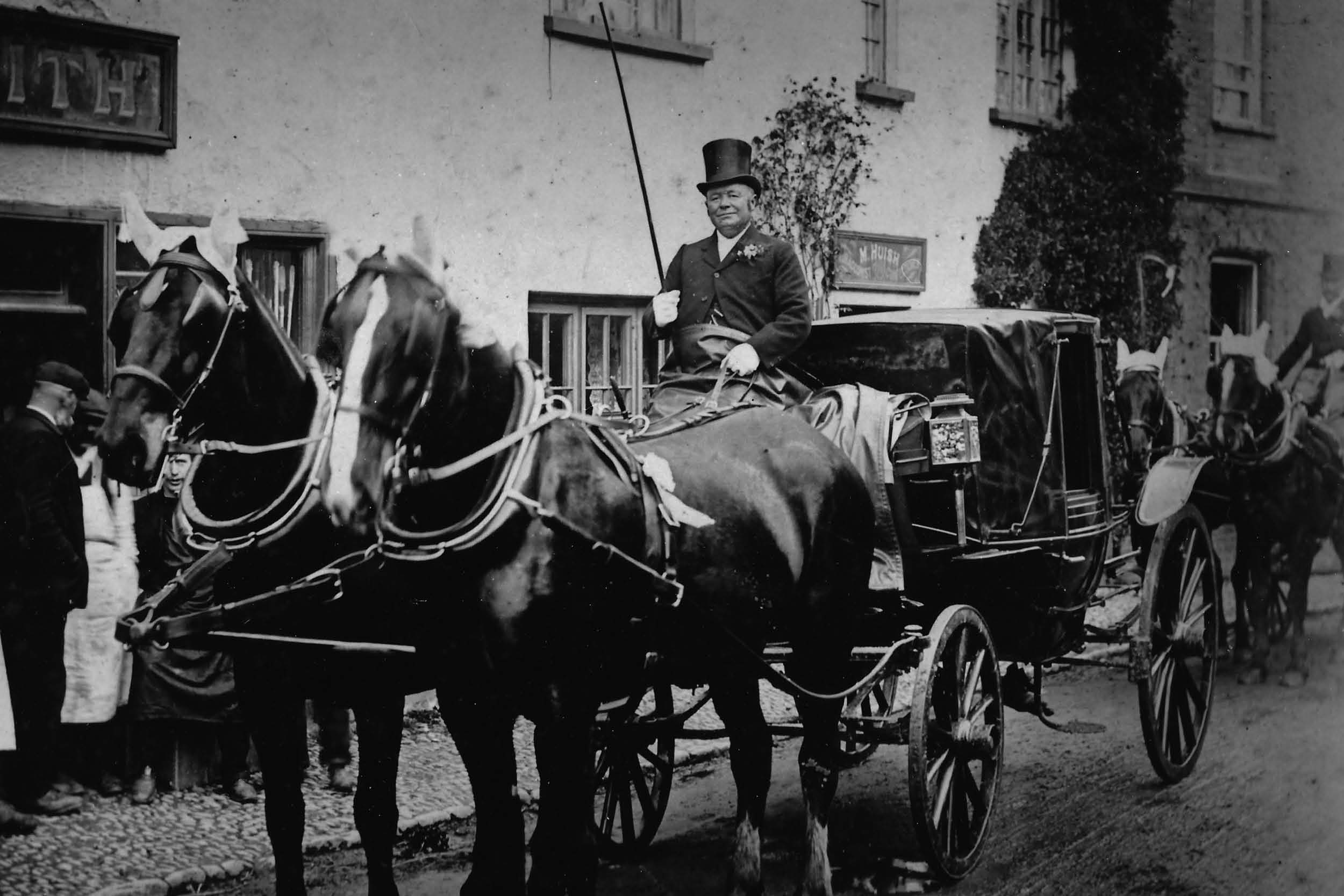
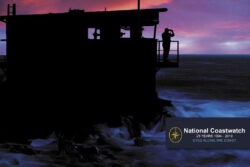
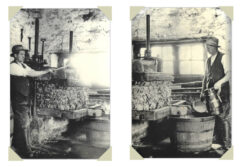
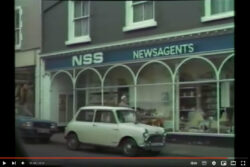
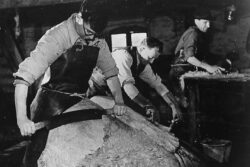
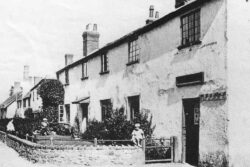
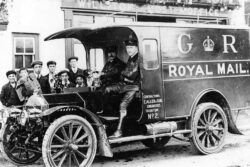

2 Responses
Would you be able to post
Hi Geraldine. Please could you confirm what you are requesting.